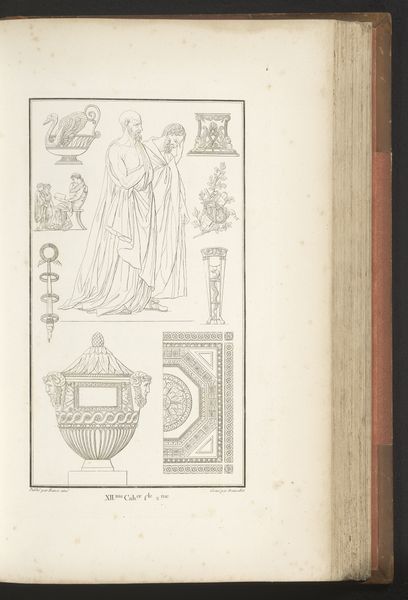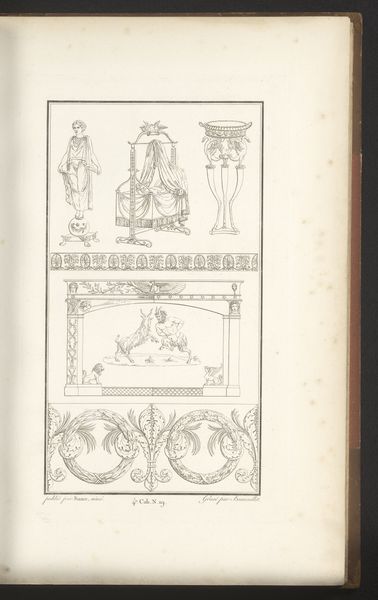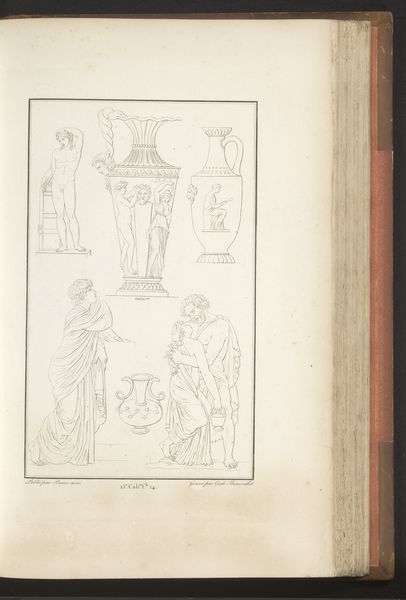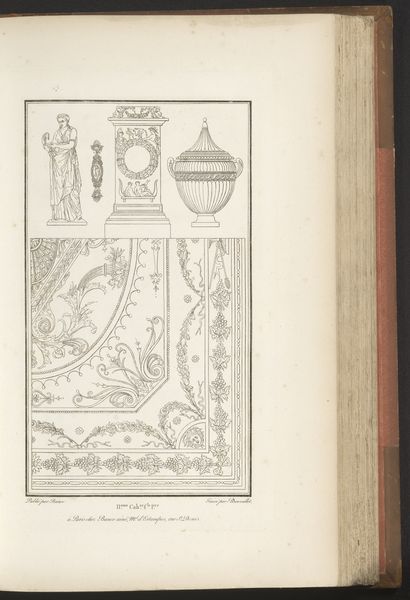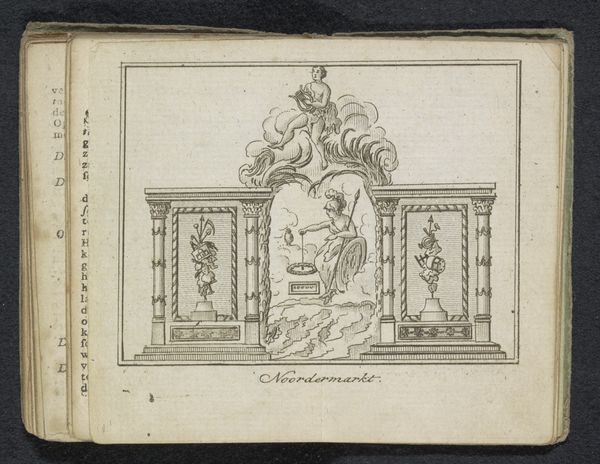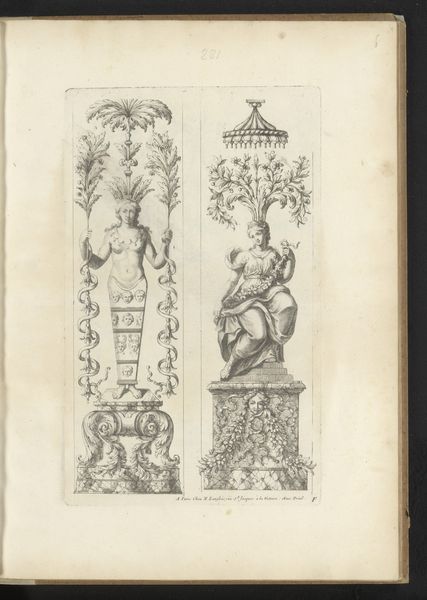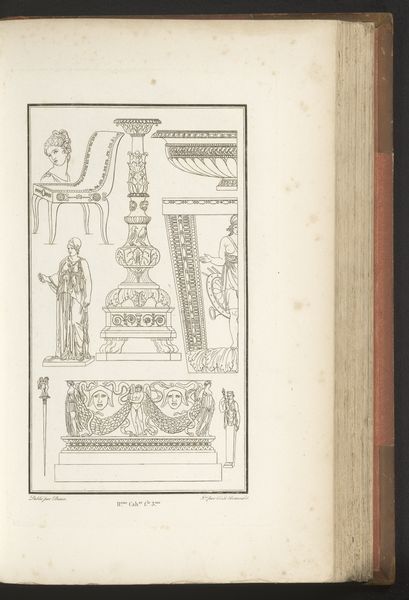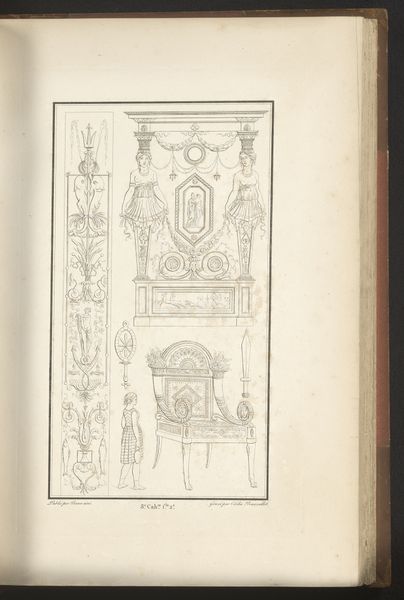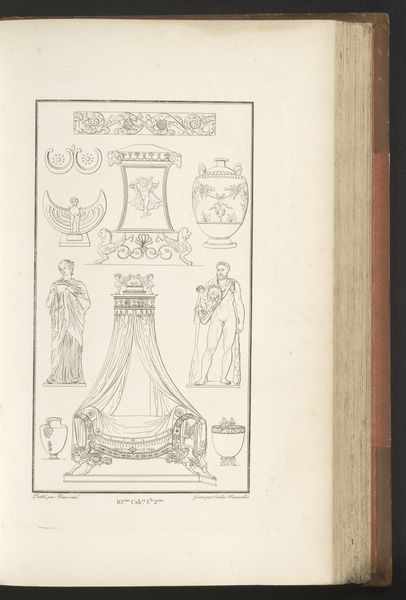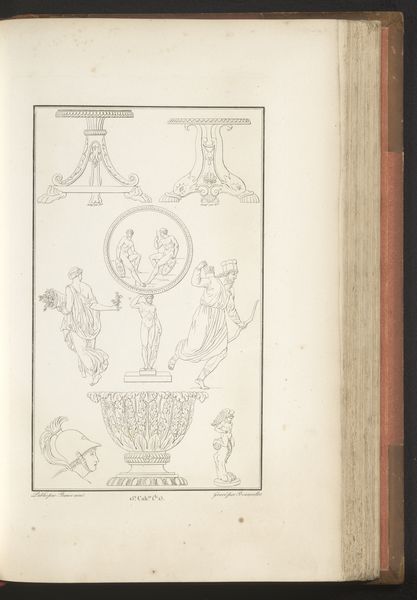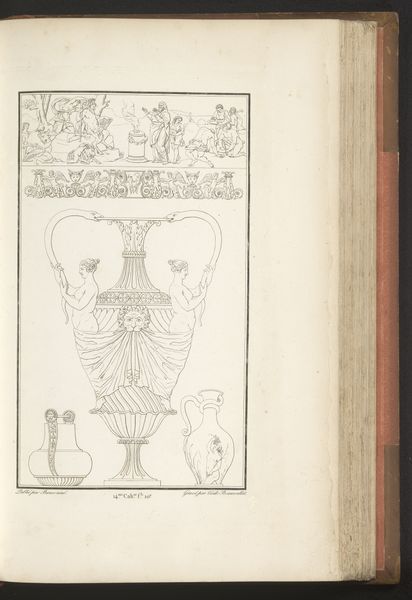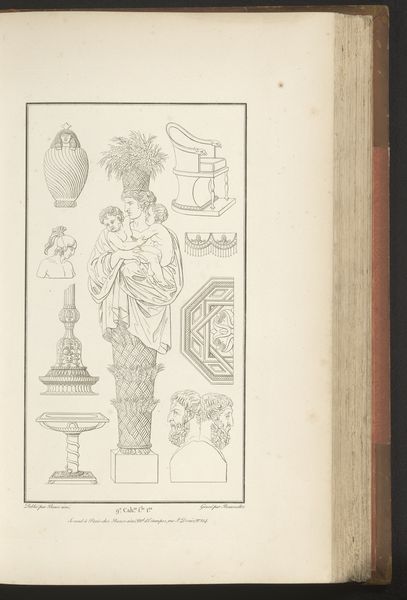
drawing, paper, ink
#
drawing
#
neoclacissism
#
classical-realism
#
figuration
#
paper
#
ink
Dimensions: height mm, width mm
Copyright: Rijks Museum: Open Domain
Curator: What an intriguing page. "Diverse ornamenten," created around 1820 by Pierre-Nicolas Beauvallet. It’s rendered in ink on paper, displaying an array of neoclassical designs. Editor: It feels like a catalog of classical aspirations. Stately, but with a touch of whimsical flair. The ink drawings on paper are meticulous; each object seems frozen in its ideal form, yearning for grandeur. Curator: Exactly. Beauvallet's background underscores this. He was deeply involved in shaping the aesthetics of public spaces and elite residences of his time, after all. Editor: And those aesthetics reflect power dynamics, wouldn't you say? Neoclassicism, emerging from the Enlightenment, harkens back to the perceived 'purity' of ancient Greece and Rome. But that purity is, of course, a construct—a selective borrowing designed to legitimize the status quo. Curator: Of course. This was the era of empire-building, after all. Editor: Look at the way these ornamenten present themselves: elevated, dignified, and controlled. They suggest a society that values order and restraint – virtues frequently touted by those in control, right? And is it me, or is that "ornamenten" really ornamented: perhaps to over-compensate something? Curator: It does beg the question to be answered on what those pieces were and could have been... It reminds me of the proliferation of such designs in architectural manuals of the time, a trend linked to the desire to ennoble contemporary life. It underscores that it wasn’t merely aesthetic; it was tied to class aspirations. Editor: Right. Who could afford to realize these designs, and whose labor would be required to bring them into being? The objects themselves become symbols, signifiers of privilege and aspiration. It opens questions about historical exploitation of people. Curator: Precisely! And by exhibiting drawings like "Diverse ornamenten", institutions reflect not only design tastes but their own role. Editor: Museums, like any public entity, actively produce culture. But at what point do we reassess the meaning assigned to them to better highlight the contributions of everyone in its existence. I'd say never has there been a more vital time. Curator: It's a pertinent question and, with drawings like these, we keep such questions very much alive. Editor: Absolutely!
Comments
No comments
Be the first to comment and join the conversation on the ultimate creative platform.
